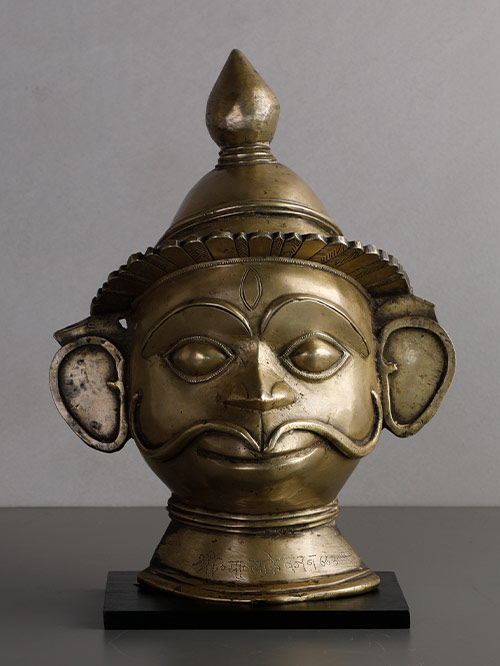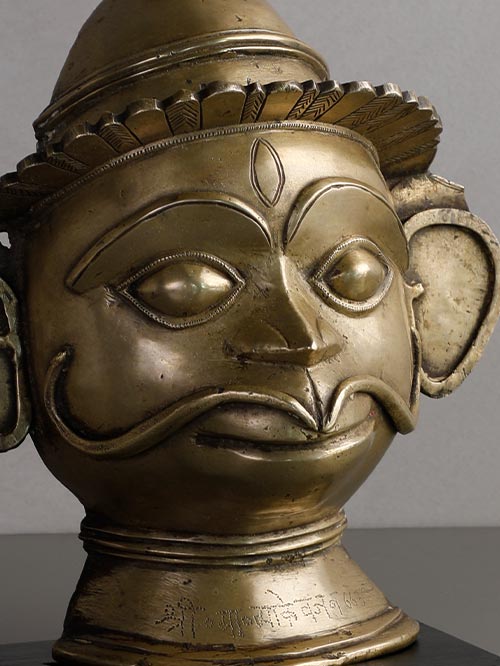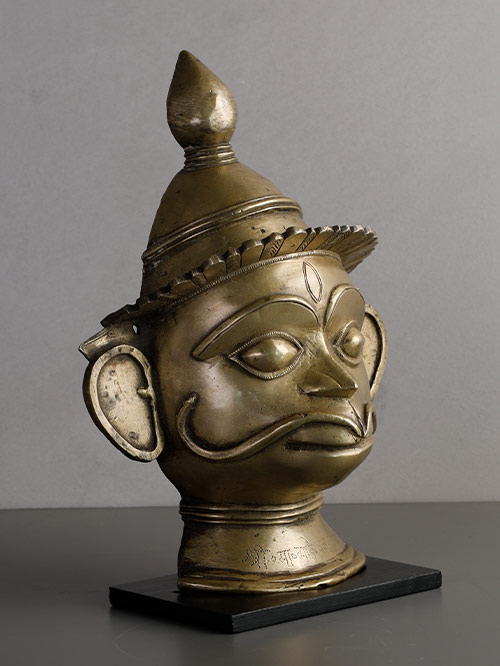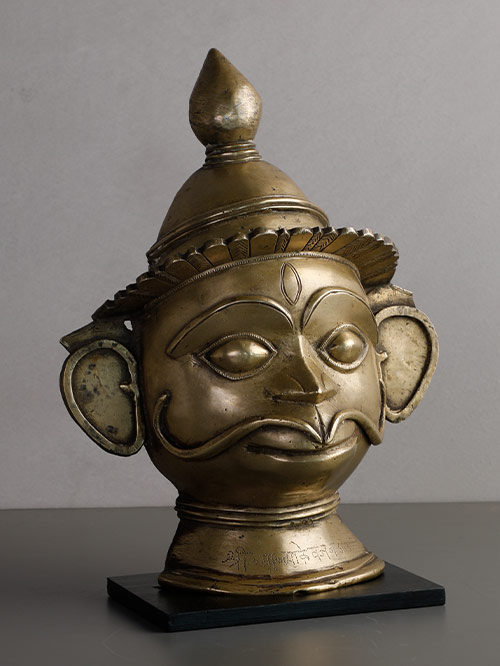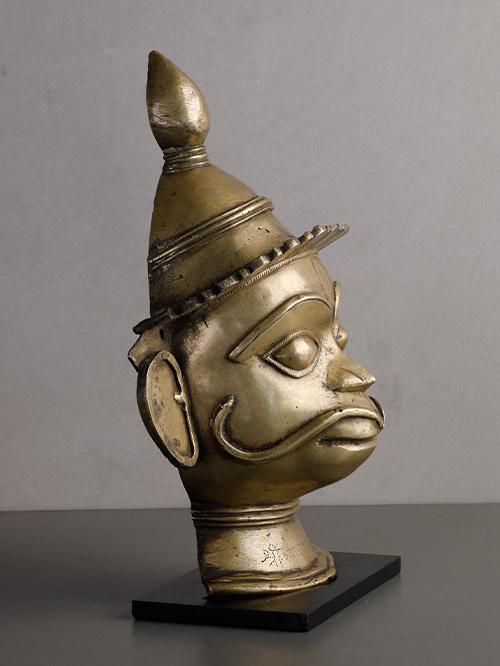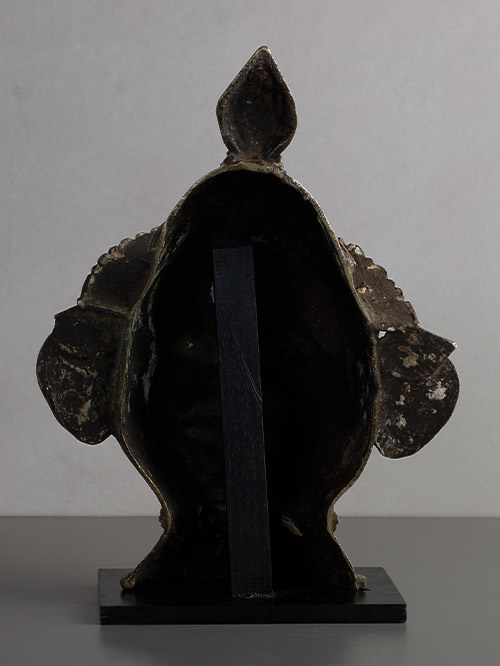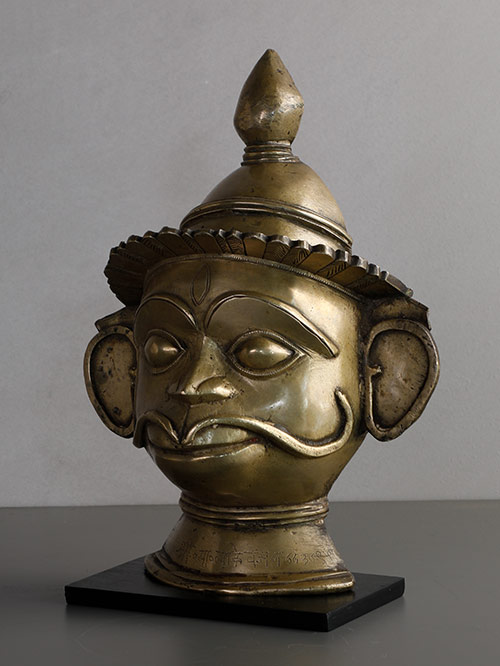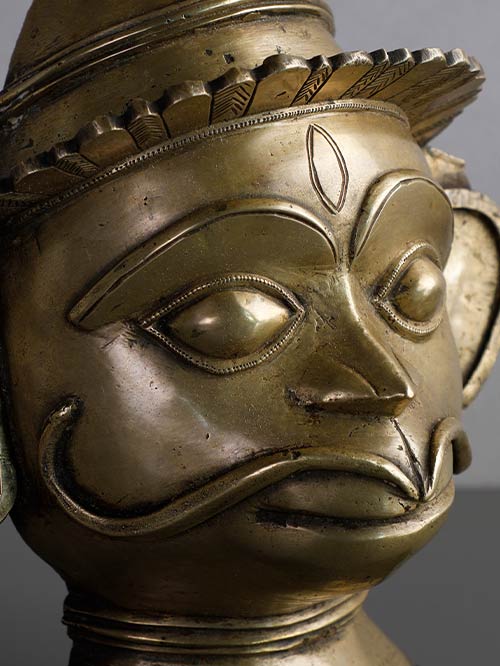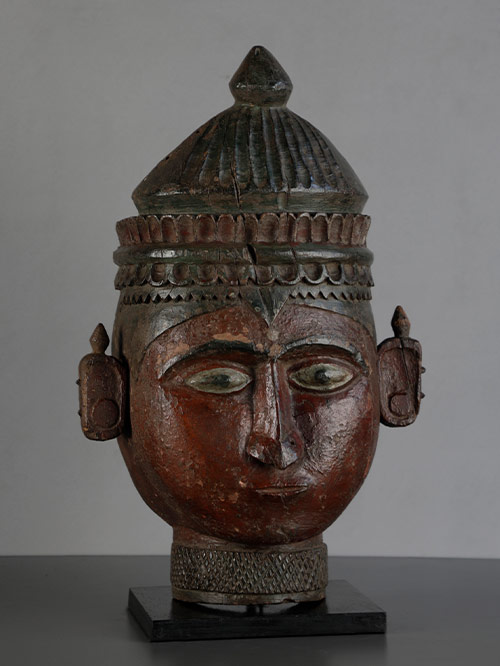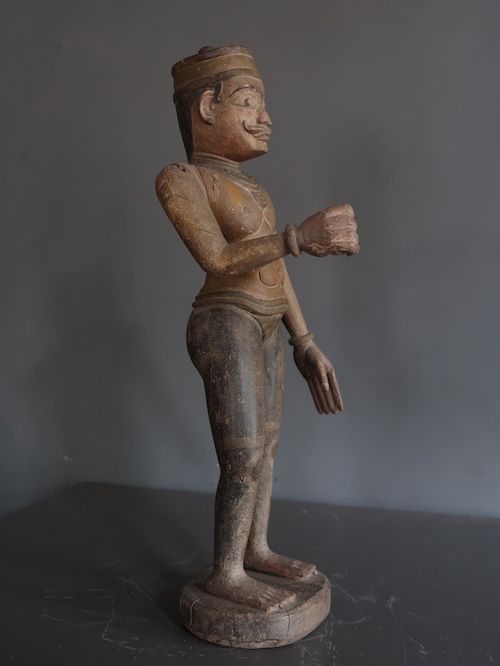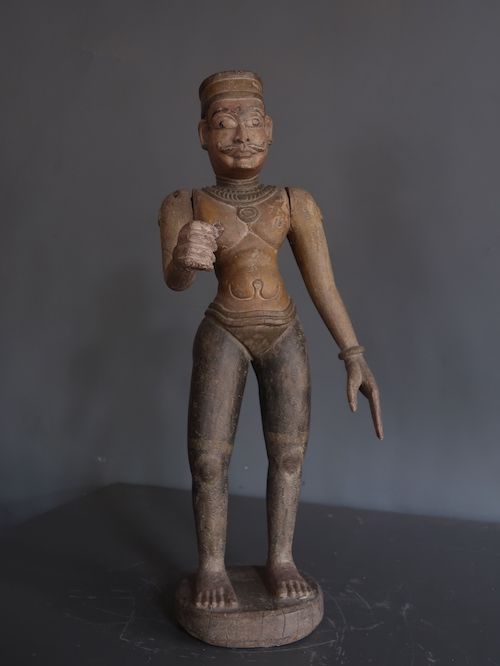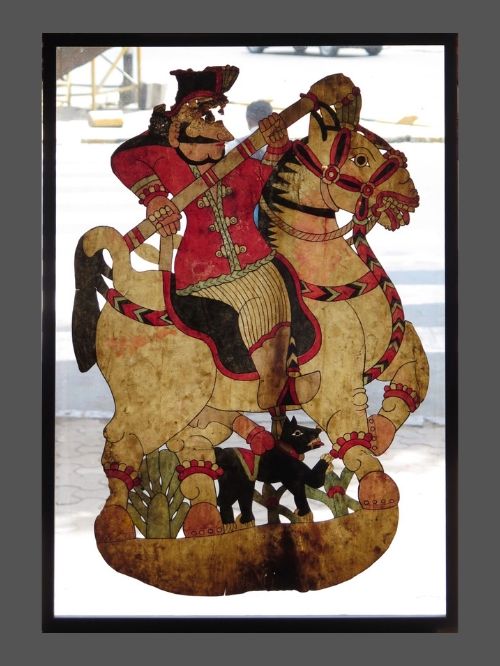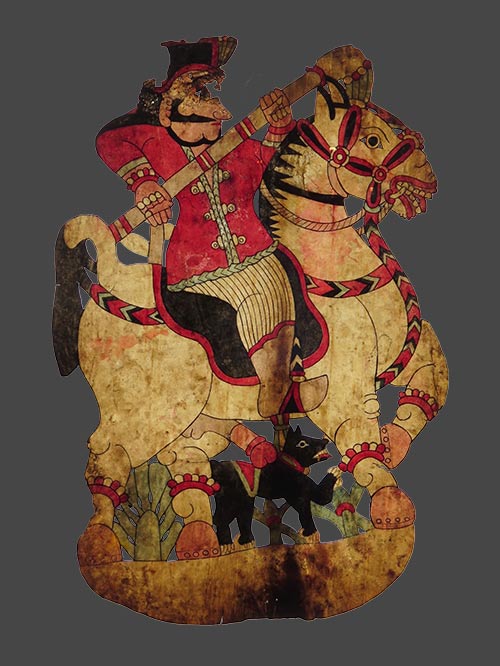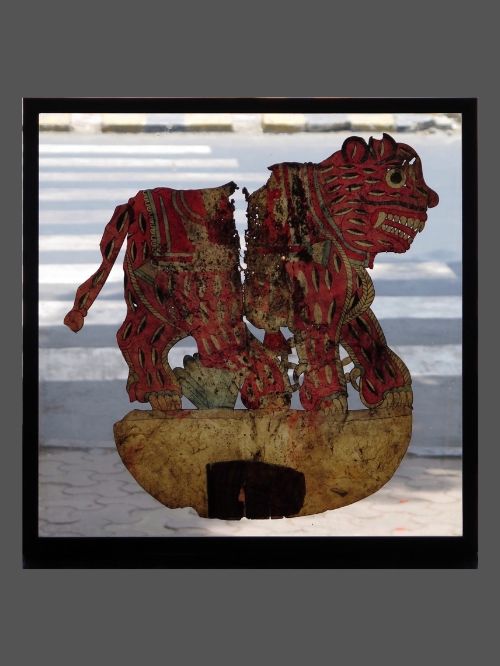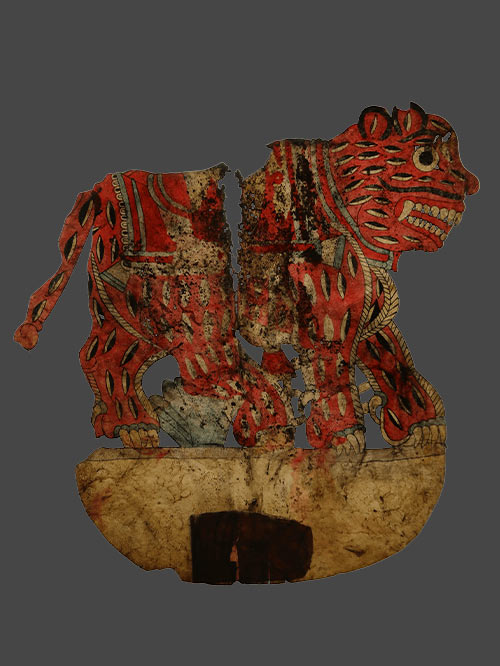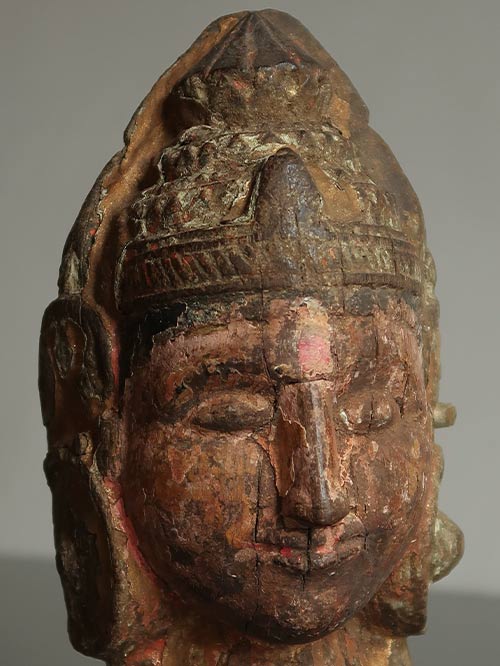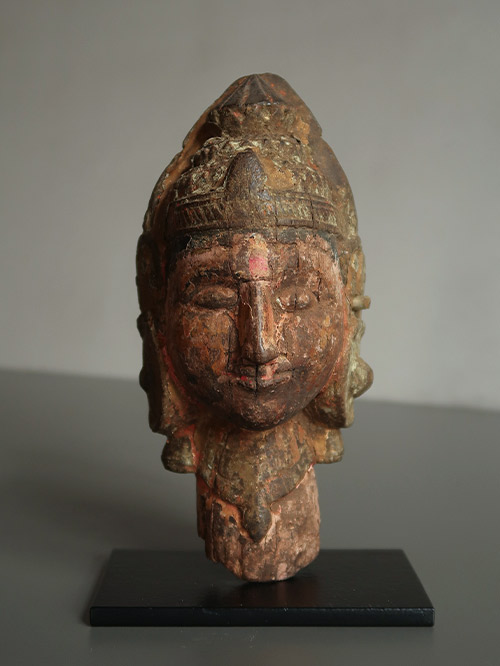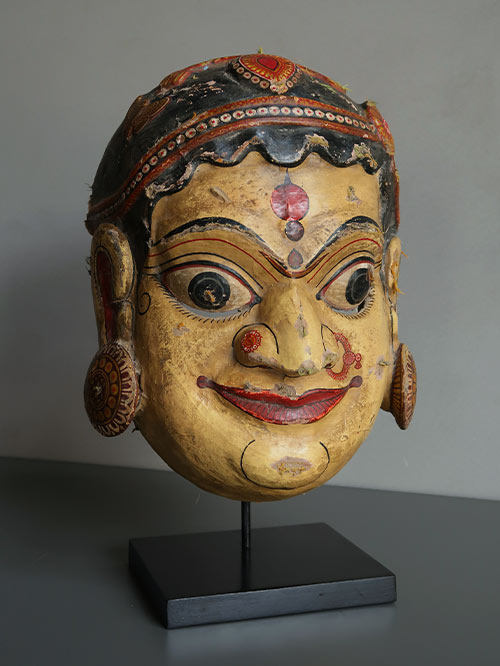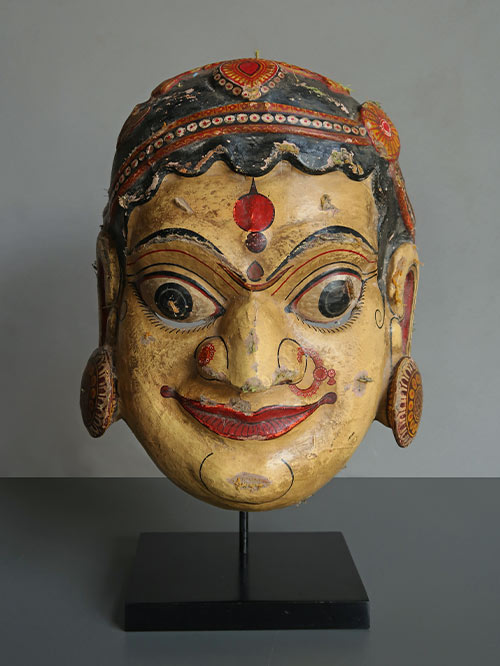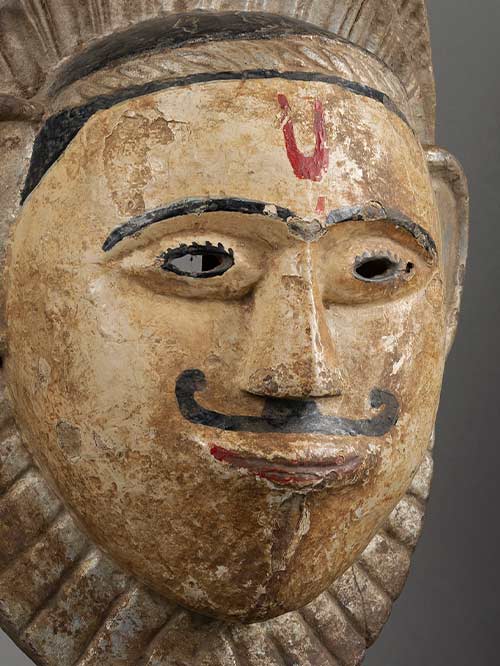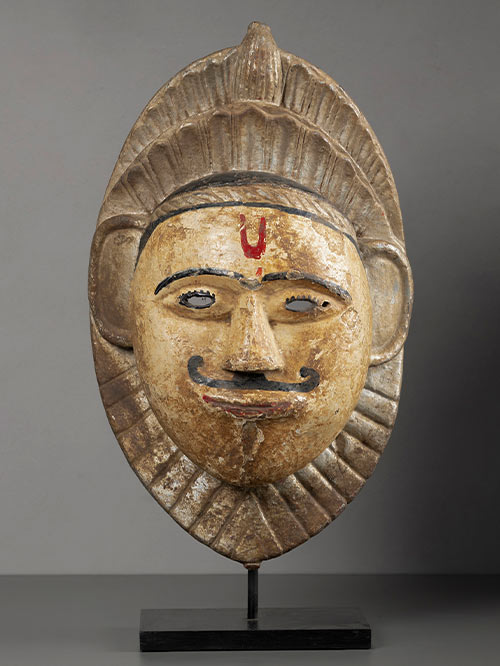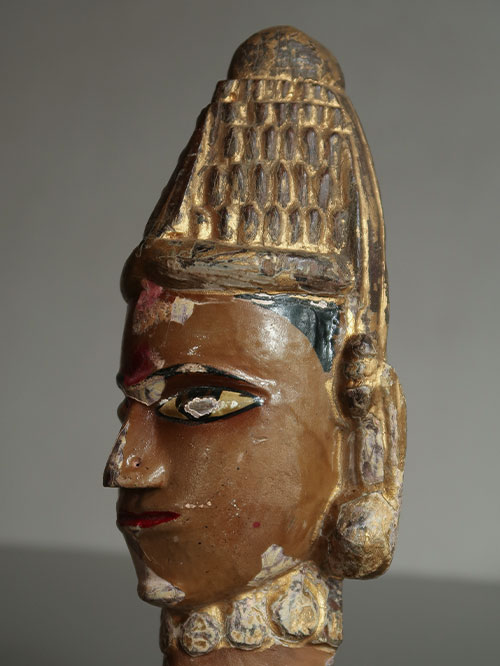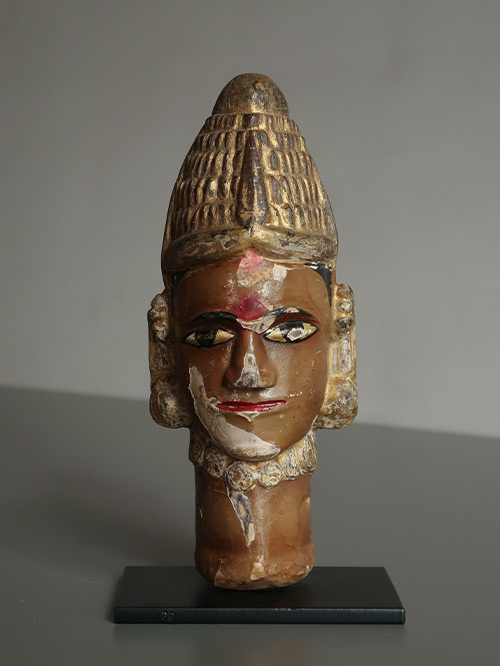Karnataka (South India)
brass alloy
A striking Hanuman face with a protruding mouth and nose, curving moustache, bulging eyes and forehead tilaka. He wears a necklace and a rimmed and pointed crown.
Mukhavata or facial masks are two-dimensional metal castings of the crowned or turbaned heads of various deities, mostly manifestations of Shiva and Parvati. Included in this group are Khandoba, Mallanna, Gauri and Hanuman and their regional variants who are worshipped under different names.
Hindu devotees believe that when an icon is consecrated and its eyes anointed by the priest, the figure becomes a living god. In household shrines in Maharastra and Karnataka, the deity was considered a privileged house guest and treated accordingly. Images of the god were bathed, clothed, bejeweled and nourished in preparation for puja and darshan. Often elaborate turbans were placed on the head of the mukha-vata and bound by the finest cloths usually in the auspicious deep red colour. In some cases the masks were mounted on a wooden framework and covered with cloths. Sometimes separate metal cast arms and legs were attached to the figure, thus providing a more realistic depiction of the deity.
Size (cms): 35.5(H) x 26(W) x 11.5(D)
Size (inches): 14(H) x 10(W) x 4.5(D)

